Atmospheric pressure affects everyone’s tire pressure gauge regardless of type, quality or what you paid. The only exception is an “absolute” pressure reading gauge and I’m willing to bet money, marbles or chalk that no one out there has a tire pressure gauge that reads absolute pressure. However, if you have an altimeter, that reads absolute pressure. All of our tire gauges read psig or “gauge” pressure. That is tire pressure relative to atmospheric pressure. Don’t believe it? Read on!
Some folks tend to treat tire pressure like a newborn baby but are totally unaware of the effects elevation and temperature have on their readings. This page addresses what elevation does to tire pressure gauge readings and saves temperature effects for this article.
The contraption pictured at the bottom of this page is an “altitude chamber” with gauges inside and out. In effect, it houses several different kinds of gauge mechanisms. Both front and back views show the different types of gauges; primarily, a Bourdon tube, a bellows and pencil gauge mechanisms. With it, I could vary the altitude and see the effects on the various types of tire pressure gauge mechanisms. When the pressure techies take these atmospheric pressure effects into account, they refer to the reading as gauge pressure or psig. I measured altitude with an analog, bellows-type altimeter inside the chamber (not shown). The chamber is best explained with the aid of the schematic to the right.
There are five gauges total attached to the altitude chamber. The A gauge is completely outside the chamber and represents a tire gauge working in an open environment just as ours normally do. It reads the pressure on the manifold, M. The input ends of gauges B and C are outside the chamber; however, their mechanisms are inside the chamber. B is my super low pressure inflatable boat pencil gauge, and C is a low pressure bellows dial gauge bought specifically for this test.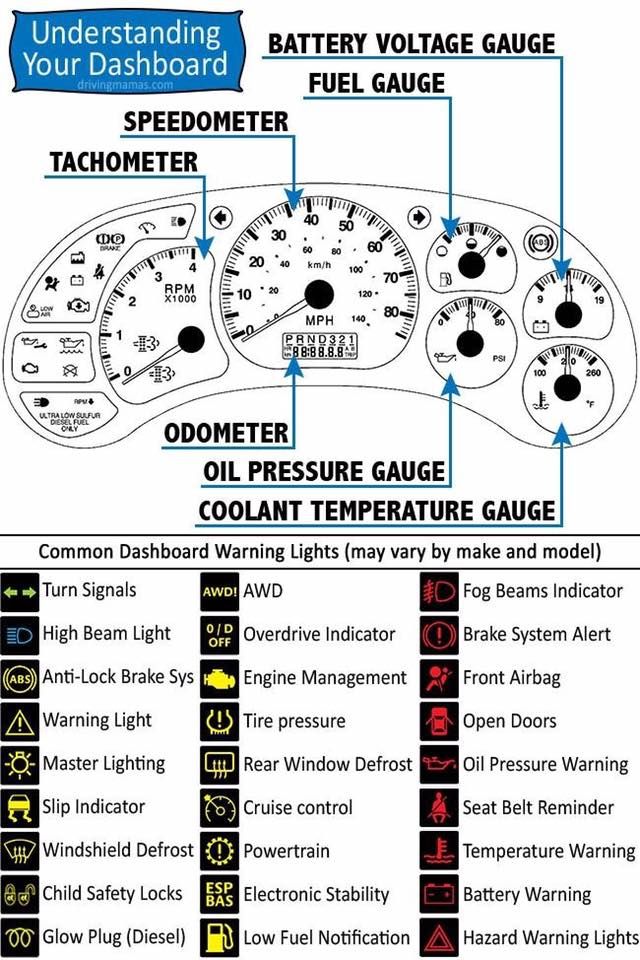 B and C “see” the simulated altitude change on their mechanisms and their input sides only see the outside, unchanging atmospheric pressure. Two more gauges were arranged with their input ends attached to manifold M. D is a conventional pencil gauge and E is a Bourdon tube dial gauge. Note that their mechanisms are inside, so they see the simulated altitude change. V is the vacuum connection to achieve the simulated change in altitude.
B and C “see” the simulated altitude change on their mechanisms and their input sides only see the outside, unchanging atmospheric pressure. Two more gauges were arranged with their input ends attached to manifold M. D is a conventional pencil gauge and E is a Bourdon tube dial gauge. Note that their mechanisms are inside, so they see the simulated altitude change. V is the vacuum connection to achieve the simulated change in altitude.
Using my shop vac, I could take the chamber from sea level (I live at ~100′ elevation) up to 9,000 feet elevation (10.51 psi atmospheric pressure) and the nut jar, test chamber survived perfectly! The altimeter mentioned above confirmed the elevation. With no pressure on the manifold or any of the gauges, B, C, D and E all rose as I drew a vacuum since their mechanisms were inside and they saw the decreased atmospheric pressure. If I could have pulled a perfect vacuum, they would have measured 14.7 psi or sea level atmospheric pressure. This confirmed that gauges are affected by atmospheric pressure.
With the chamber at sea level, I pressurized the manifold M. A, D and E showed the increased pressure. I then dropped the chamber pressure (increased the altitude) and D and E showed an increase in pressure, but A showed no change. This again confirmed that gauges read more pressure at higher elevations than at lower elevations. I should add that all gauges were working normally. They were responding to atmospheric pressure as expected.
A pencil gauge is the most straightforward way to explain how atmospheric pressure affects all tire pressure gauges. Use the pencil gauge schematic to the right to follow along. Atmospheric air pressure enters the measurement side of all gauges and pushes against some sort of springy-thingy. In a pencil gauge, it’s an actual piston pushing against an internal coil spring. In most dial gauges, it’s the spring force of a device called a Bourdon tube (they’re flat and curved, not tubular outlined in blue). In a bellows dial gauge, it’s the bellows chamber circled in red. With a digital gauge, it’s a combination of one of the above and a transducer. However, all of these gauges have one more “force” contributing to the measurement side: the outside atmospheric air pressure. A pencil gauge is simply a cylindrical chamber with an airtight piston inside. The measurement indicator side is always open to atmosphere pressure. The end that you connect to the tire (input side) becomes a closed chamber once it is connected to a tire. It no longer sees atmospheric pressure. So, as the piston moves due to tire pressure, it has to push against the spring plus atmospheric pressure. Atmospheric pressure varies significantly with altitude and, to a much lesser degree, due to weather changes. This creates a gauge reading that varies with change in altitude or atmospheric pressure. Conversely, if the input side is open to atmospheric pressure and you pull a vacuum on the measurement side, it measures the difference between the two sides of the piston. Test chamber gauges B and C are arranged to see this in action.
With a digital gauge, it’s a combination of one of the above and a transducer. However, all of these gauges have one more “force” contributing to the measurement side: the outside atmospheric air pressure. A pencil gauge is simply a cylindrical chamber with an airtight piston inside. The measurement indicator side is always open to atmosphere pressure. The end that you connect to the tire (input side) becomes a closed chamber once it is connected to a tire. It no longer sees atmospheric pressure. So, as the piston moves due to tire pressure, it has to push against the spring plus atmospheric pressure. Atmospheric pressure varies significantly with altitude and, to a much lesser degree, due to weather changes. This creates a gauge reading that varies with change in altitude or atmospheric pressure. Conversely, if the input side is open to atmospheric pressure and you pull a vacuum on the measurement side, it measures the difference between the two sides of the piston. Test chamber gauges B and C are arranged to see this in action. As I began to pull air out of the chamber, B and C reported the pressure difference! Gauge pressure is a real thing and those “tire mothers” who pay attention to tire pressure like a new born babe must take altitude and temperature into account! More on temperature in the future.
As I began to pull air out of the chamber, B and C reported the pressure difference! Gauge pressure is a real thing and those “tire mothers” who pay attention to tire pressure like a new born babe must take altitude and temperature into account! More on temperature in the future.
Photo: istockphoto.com
Driving is a luxury that many people across the country enjoy, but if proper care isn’t taken to maintain a vehicle, it can result in rapid wear, part failure, and poor control. Tires are one of the features of a car that can sometimes be overlooked, but it’s important to ensure that you know how to use a gauge to check tire pressure. Underinflated tires increase braking distance, reduce steering control, and accelerate tire wear, which can result in complete tire failure. Overinflated tires are not as hazardous, but they can still increase tire wear, affect the wear pattern of the treads, and reduce control.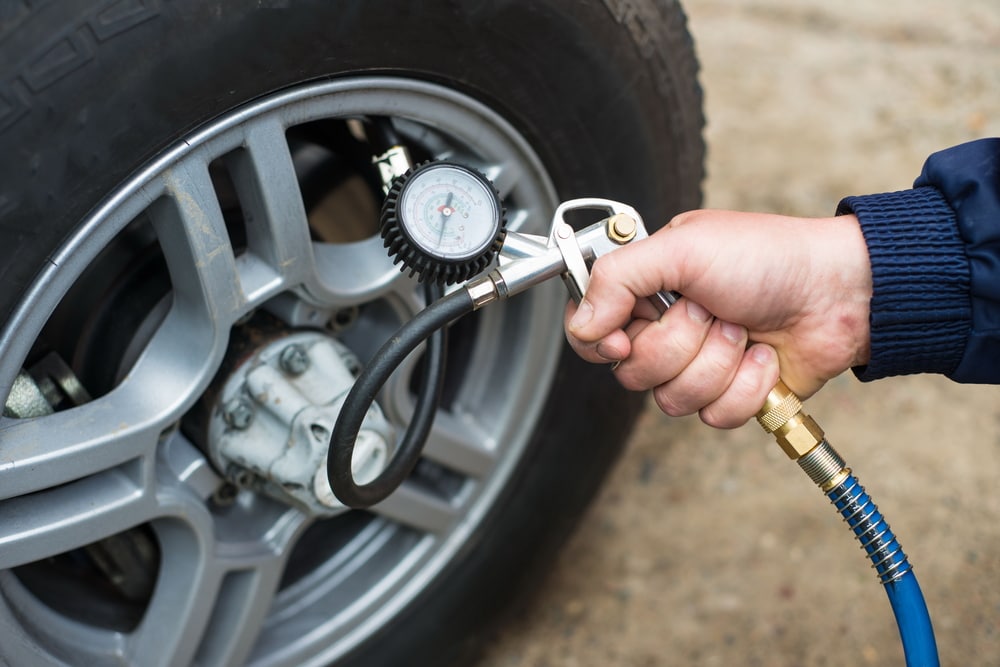 To ensure that your tires are not under- or overinflated, it’s necessary to understand how to use a tire pressure gauge.
To ensure that your tires are not under- or overinflated, it’s necessary to understand how to use a tire pressure gauge.
It’s best to check the tire pressure when the tires are cold, such as first thing in the morning or after the vehicle has been parked in the shade for several hours. This helps to increase the accuracy of the readings. In order to test tire pressure, you’ll need to purchase a viable tool such as this tire pressure gauge—a favorite in our researched guide to the best tire pressure gauges.
Advertisement
Learning how to use a low-pressure tire gauge is relatively simple, though you will need to find the manufacturer’s recommended PSI before you can begin. While it may seem like the first thing to do is take out the tire pressure gauge, that wouldn’t get you very far unless you already knew the manufacturer’s recommended PSI for the tires. Given that most people don’t typically memorize this information, it’s a good idea to check and verify before using the tire pressure gauge.
Given that most people don’t typically memorize this information, it’s a good idea to check and verify before using the tire pressure gauge.
Tire and loading information is commonly included in the owner’s manual, though you may also be able to find it on a sticker on the driver’s side door, near the trunk lid, inside the fuel door, or even inside the console. Look for a two-digit number, like 35, followed by PSI, which means pounds per square inch.
Related: The Best Jump Starters With Air Compressors for Your Car
Photo: istockphoto.com
STEP 2: Locate the tire valve and remove the cap.Each tire has a valve used to inflate or deflate it, depending on the suggested PSI and the current tire pressure. The tire valve is typically a small, black tube about an inch long with a threaded cap. It can commonly be found on the inside of the rubber wheel, protruding through a gap in the hubcap. Locate this valve, then remove the threaded cap so that the tire pressure gauge can fit over the top of the valve. Make sure to keep track of the tire valve cap because it’s very small and easy to lose.
Make sure to keep track of the tire valve cap because it’s very small and easy to lose.
The next step to learning how to use a tire pressure gauge is to simply press the gauge down onto the tire valve after the threaded cap has been removed. Each tire valve contains a spring-loaded valve core that automatically seals itself using air pressure from inside the tire. By pressing the gauge against the valve core, the gauge opens the valve to the internal air pressure of the tire and allows the gauge to act as the seal while simultaneously measuring the tire’s PSI rating.
Advertisement
STEP 4: Check the reading on the tire pressure gauge.The tire pressure gauge should be held firmly against the open tire valve so that no air is escaping. If the tire pressure gauge is making a hissing sound, you need to adjust the angle of the gauge inside the tire valve until it is silent. This indicates that the tire pressure gauge is measuring the full tire pressure instead of getting a partial reading due to escaping air. To check the reading on the tire pressure gauge, simply read the slide ruler for manual pen gauges, the dial for dial pressure gauges, or the digital screen for digital pressure gauges. The ruler, dial, or screen should display the current tire pressure in PSI.
To check the reading on the tire pressure gauge, simply read the slide ruler for manual pen gauges, the dial for dial pressure gauges, or the digital screen for digital pressure gauges. The ruler, dial, or screen should display the current tire pressure in PSI.
Photo: istockphoto.com
After taking the tire pressure measurement, write down the current pressure for each tire so that you don’t forget and need to check again. If the pressure within each tire is too high, you can easily drain some air by holding the tire pressure gauge against the tire valve at an angle, listening for the hiss of escaping air. Periodically check the tire pressure to ensure that you don’t drain too much air and stop once you reach the desired PSI.
If the pressure within the tire is too low, connect an air compressor such as this portable inflator—a favorite in our researched guide to the best tire inflators—to the tire valve to inflate it. After inflating the tire, use the tire pressure gauge to check the PSI and make sure it is now at the correct level according to the manufacturer’s recommendations.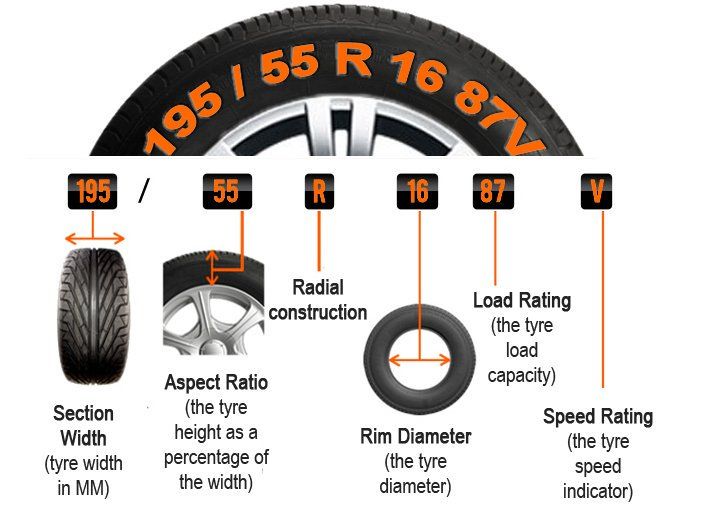
It’s advised to check the tire pressure on your vehicle at least once per month to ensure that you are safe while driving and not doing any unexpected damage to your tires.
Advertisement
RELATED: I Tried a Cordless Tire Inflator―Did It Work?
Final ThoughtsEffectively using a tire pressure gauge is a necessary skill for a driver to have in order to be certain that their vehicle is properly maintained. Additionally, by checking the tire pressure of the vehicle, drivers can ensure that they are getting the most out of each tire, instead of accidentally causing premature wear and tear due to overinflated or underinflated tires. Also, keep in mind that you can deflate a car tire with only a tire pressure gauge, but to fill the tire you will need access to an air compressor and a suitable attachment for filling tires. Consider investing in a home air compressor or find a local gas station that has one available for use.
Advertisement
In America and Europe, a tire pressure monitoring system is an indispensable element of a car.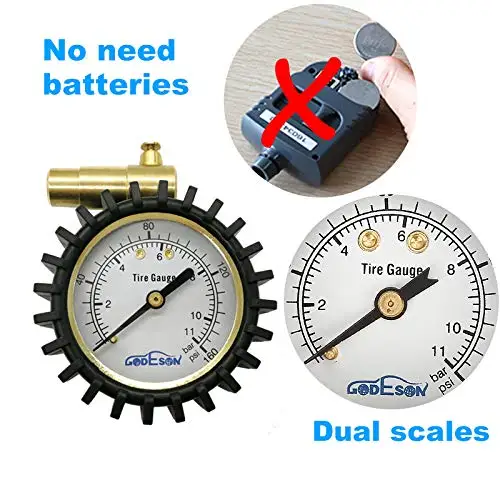 Most likely, in the near future the same rules will be adopted in Russia.
Most likely, in the near future the same rules will be adopted in Russia.
But even if this system does not become mandatory, nothing prevents it from being installed in a car if the standard TPMS is not provided by the manufacturer: it is much better to find out in time that the wheel is flat than to wait for sad consequences.
TPMS (tire pressure monitoring system) monitors changes in tire pressure: even a small decrease in pressure in one wheel increases fuel consumption, worsens car handling and increases tread wear.
Now the pressure control system is divided into systems of direct (direct) and indirect (indirect) directions - we will tell you in more detail what it is.
In direct measurement systems, sensors are placed on the valves of all wheels. They can be installed inside or outside. The sensor detects the level of pressure in the wheel and transmits information via radio to the control unit. Here, the accuracy of the readings plays a big role - you can even track a decrease in pressure by only 0.1 bar.
Here, the accuracy of the readings plays a big role - you can even track a decrease in pressure by only 0.1 bar.
The "direct" system is more expensive than the "indirect" one, but it transmits information more accurately and faster. She, of course, has her own nuances: if you have to swap tires for even wear, then information about this will need to be entered into the control unit.
The so-called "indirect" TPMS is essentially a software extension for ABS: in its work it uses standard wheel rotation sensors. The system monitors changes in wheel speed and can diagnose tire pressure loss based on this information.
In this case, we are not talking about exact values, but only signals a significant deviation from the usual pressure - a significant deviation in this case is 0.3 bar, and a dangerous one is 0.5 bar.
"Indirect" systems may erroneously transmit a signal for a decrease in tire pressure also when:
Uneven load distribution
Frequent change from lane to lane
slippage
Sharp descents and ascents
But this can be adjusted, for example, by setting an alert delay.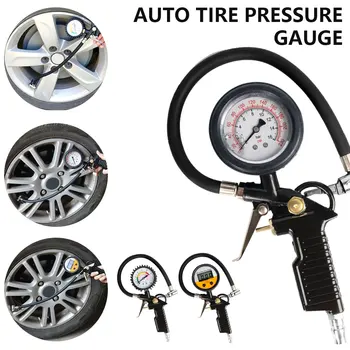 You can also reboot the system so that it adjusts to different tire pressures at startup.
You can also reboot the system so that it adjusts to different tire pressures at startup.
The AIRLINE range includes 2 models of the "direct" system.
Tire pressure monitoring system TPMS BLACK ATP-MS-01 includes 4 sensors and a receiving module with a color LCD display. The sensors are mounted on the nipple of the car wheel, measure the pressure and air temperature in the tire and transmit information about the pressure value via radio to the display. When the tire pressure changes, the system transmits information with sound signals and displays it on the display. The pressure and temperature thresholds are set in the display menu. The system can be installed independently - it does not require special skills.
The receiving module is powered by the car's cigarette lighter socket, there is also a USB output for convenient parallel charging of the smartphone. The kit includes a receiver with a display, 4 external pressure sensors, 4 locknuts, a kit for mounting sensors, a warranty card and instructions.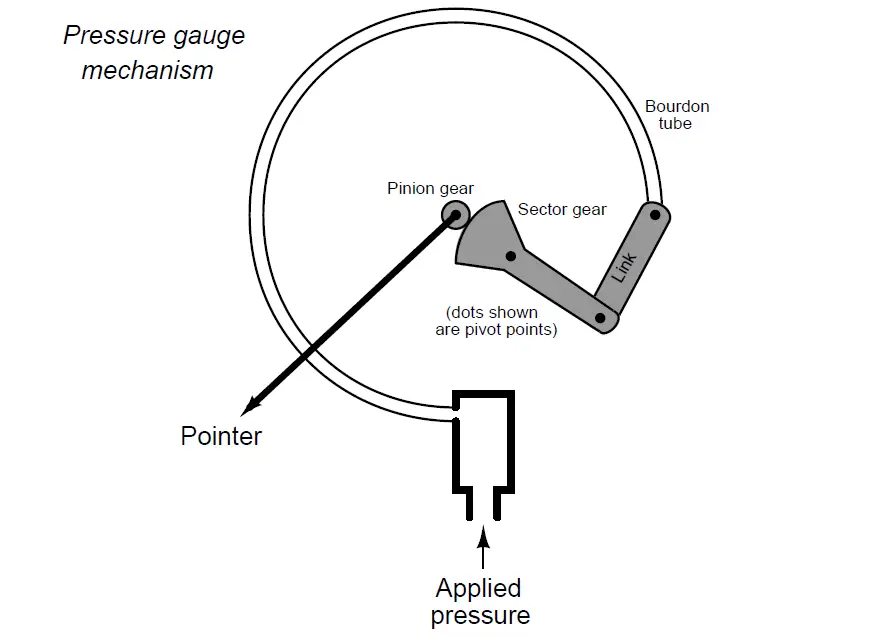 The operating temperature of the sensors is from -40°С to +125°С.
The operating temperature of the sensors is from -40°С to +125°С.
Tire pressure monitoring system TPMS wireless INSIDER SOLYAR ATP-MS-02 includes 4 sensors and a receiving module with a color LCD display. When the tire pressure changes, the system transmits information with sound signals and displays it on the display. The sensors are marked position, but the wheels can be swapped, everything is reconfigured. The operating temperature of the sensors is from -40°С to +125°С.
The kit includes a double-sided adhesive tape for fixing the receiving module on the dashboard of the car, it can also be mounted on a Velcro mat.
The receiver module is powered by a built-in lithium-polymer battery, which is charged by a built-in solar panel or a microUSB socket. The kit includes a receiver with a display, internal sensors, a USB-microUSB cable, double-sided tape, a warranty card and instructions. Tire fitting is required for installation, so we recommend contacting a service center for proper installation.
Photo: AutoView
You can only notice a flat tire when the car is stationary. To do this, however, the car must at least sometimes bypass in a circle. Do you do it often? Exactly. Only a very experienced driver is able to notice the “lack of air” on the go by the behavior of the car. It is for this reason that modern cars are equipped with a tire pressure monitoring system.
Eduard Raskin
How many times has it happened: a downstream neighbor rushes on a flat tire without even noticing the problem. The results of such a trip can be bad and very bad: at a minimum, you will have to replace an unevenly worn wheel, because it can simply burst at any time. The worst option is an accident caused by incorrect suspension operation and loss of controllability. And just a wheel flat!
To solve this “household” malfunction once and for all, automakers equip modern cars with a special tire pressure monitoring system. Previously, complex electronics were responsible for this function, which controlled and calculated revolutions, analyzed and let the driver know about problems.
Previously, complex electronics were responsible for this function, which controlled and calculated revolutions, analyzed and let the driver know about problems.
Now everything is much simpler: one control unit and one sensor per wheel. The tire “blew” a little - the corresponding icon will light up on the instrument panel. Particularly "smart" cars can even show which particular wheel is "lack".
Photo: AvtoVzglyad
"Brains" only collect information and alert. The main work lies on the sensor itself, which is quite simple: a battery for autonomous operation, an electronic pressure gauge that allows you to calculate the pressure not only in motion, as it was before, but also on a stationary car, as well as a transmitter responsible for communicating with the head unit .
A sensor is installed instead of a conventional nipple. The device itself is very compact and incredibly resistant to the whims of our roads and drivers, because it is located inside the wheel, and only a plastic pipe remains “on the street”, which can only be torn off or damaged by a direct hammer blow.